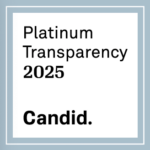Executive Summary
FDA’s evolving efforts to develop a ‘structured risk-benefit’ framework is playing an important role in accelerating access to drugs for rare diseases and specific subgroups in cancer; there may be less attention to an accompanying phrase that is growing in currency as a factor in the equation: ‘regulatory risk’ – the term for how FDA calculates the odds of making the wrong regulatory decision for a small-population treatment.
FDA is trying to formalize the inherently subjective process of weighing risks against benefits when making a drug approval decision by developing and implementing a structured risk/benefit assessment as a routine part of the review process.
That calculation necessarily relies on relatively formal, quantifiable criteria: an analysis of the condition, current treatment options, summaries of the known risks and benefits, and approaches to risk management.
But it is also bringing forth from FDA attempts to express what have often been unstated elements of an approval determination.
In particular, senior officials at the agency are starting to sound more comfortable acknowledging that the decision to approve a drug for a limited population often includes a calculation on the impact of a mistake in the regulatory decision. That is, the risk that the agency will take too cautious a stance and cut off a potentially effective therapy in a context that is very different from the public health risk associated with a serious adverse event that arises from a more widely used drug.
Several senior FDA officials described that calculus recently during the Prevision Policy/Friends of Cancer Research Biopharma Congress on Nov. 4 and again during FOCR’s annual meeting on Nov. 16. Two officials used the phrase “regulatory risk” to explain the balance of assessing the number of patients that might be at an increased safety risk from a new therapy compared to the opportunity for treating a previously untreated or poorly treated condition.
Richard Pazdur, director of the Office of Hematology & Oncology Products, director-designate of the new Oncology Center of Excellence and unofficial spokesperson for new ways of viewing the risks of approval versus non-approval, said “there is a thing called regulatory risk.” He distinguished between the judgments on a drug for broad use (“for hypertension or something where millions would be exposed”) and drugs for “a very small group of patients.”
Drawing from his experience in oncology – with its increasingly smaller and ever more carefully defined patient populations – Pazdur observed that FDA has to be sensitive to what type of trial and data to push for in an initial approval.
“One has to take a look at the context and the bigger picture,” Pazdur said. “What can be done; what is realistic to ask the sponsor to do and what do patients really want. … Patients will accept a higher degree of toxicity and unknowns when they do not have any other therapies available to them.”
“Regulatory risk” may just be an FDA short-hand to restate the balancing of potential benefits to patients versus the risks – the standard benefit-risk analysis at the heart of many FDA approval decisions. However, the phrase appears to connote a calculation of how much risk FDA is willing to take on to try to serve an underserved patient group – and that may be a significant change in emphasis.
Lartruvo Case Study
Amy McKee, acting deputy director at OHOP, backed up Pazdur’s comments by explaining how the regulatory risk calculation worked in practice with the Oct. 19 accelerated approval for Eli Lilly & Co.’s Lartruvo (olaratumab) for add-on treatment with doxorubicin for soft tissue sarcoma. (Also see “Lilly’s Lartruvo Scores Broad FDA Approval In Orphan Sarcomas” – Pink Sheet, 19 Oct, 2016.)
Larturvo was backed by a solid base of preliminary survival data from a 133-patient study: an 11.8 month improvement in overall survival in a 133-patient study compared to doxorubicin alone – a separation of survival curves that one FDA reviewer described as large enough “to drive a truck through.”
McKee described the process of predicting the potential risks to patients from an early approval of a drug with significant early results. She noted on the risk side that the Lilly product is a monoclonal antibody and therefore could be viewed by FDA as a relatively low toxicity risk. “It did not add the same level of toxicity as adding another chemotherapy drug.”
FDA’s formal risk assessment of the drug from the internal approval memos notes that the major safety risk was from IRRs – infusion related reactions (about 3% serious reactions from olaratumab) – which are generally well understood by practitioners.
“Oncologists are familiar with IRRs and manage this risk by giving steroids and antihistamines as necessary,” FDA notes. “There was one death due to an IRR in a patient who received olaratumab after doxorubicin. That patient did not receive any pre-medication.” The Lilly monoclonal-doxorubicin combo is also associated with an 8% frequency of severe musculoskeletal pain compared to 2% for the chemotherapeutic drug alone – again a side effect that FDA said can be managed by supportive care.
McKee also observed that the “context of the disease and the overall development program” further allowed FDA to put the small initial study in perspective for accelerated approval. FDA estimates that 12,300 new cases of soft tissue sarcoma are diagnosed yearly in the US with about 5,000 deaths per year. That defines a limited population with a very serious disease.
McKee pointed out that the risk that an approval would negatively impact treatment of control patients in the confirmatory trial (the 460-patient Phase III ANNOUNCE trial) was reduced because of the presence of the standard of care as the comparator and because of the advanced status of the confirmatory trial at the time of the approval decision.
“We, the agency, knew where the enrollment was for the larger trial” when FDA made the early accelerated approval decision. McKee said that contextual knowledge made the approval decision not a “big leap.” Clinicaltrials.gov describes the ANNOUNCE confirmatory trial as ongoing but closed to patient enrollment.
The comparative nature of the confirmatory study meant that patients “weren’t going to be losing out,” McKee said. The confirmatory trial assured at least treatment with standard of care by testing the two-drug regimen (olaratumab and doxorubicin) versus doxorubicin alone.
Validating The Exondys Approach
The top statistician at the Center for Drug Evaluation & Research, Lisa LaVange, also used the term “regulatory risk” to explain the balancing decision when trying to decide what flexibility the agency can show in the methods of statistical analysis for drugs which show a “momentous” effect in early-stage trials.
“All the sudden you get a result you weren’t expecting. It’s momentous. You now have pressure: if this drug is really that spectacular,” LaVange observed, “we need to get it to the patients as soon as we can. But we need enough rigor to make sure we can take a regulatory action without too much regulatory risk.”
The attempts to explain FDA oncology decisions in terms of regulatory risk put CDER Director Janet Woodcock’s decision to override the review team and approve Sarepta’s Exondys-51 (eteplirsen) in a broader perspective. While she clearly had sharp differences of opinion with the leadership of the Office of Drug Evaluation I on the substance, design and results of the eteplirsen development, her reading of the regulatory risk from a positive decision falls close to the oncology view. (Also see “Accelerated Approval After Eteplirsen: A Lowered Bar Or A Unique Event?” – Pink Sheet, 20 Sep, 2016.)
Woodcock’s approval memo for Exondys-51 stresses some of the same assessments of regulatory risk discussed by the oncology staff at the Friends of Cancer Research event. As such, it seems attuned to a developing strain of review philosophy – primarily centered in the oncology review group.
Woodcock specifically cited the unmet need and the limited number of patients who would be put at risk from use of the product. She enumerated the contextual issues of the intended population: “the life-threatening nature of the disease; the lack of available therapy; the fact that the intended population is a small subset of an already rare disease; and the fact that this is a fatal disease in children.”
Woodcock further assessed a low toxicity risk from the small studies to date. “Of note, the therapy has been relatively safe in the clinic, although intravenous administration always carries risk.”
https://pink.pharmamedtechbi.com/PS119598/Regulatory-Risk-A-New-Factor-…

